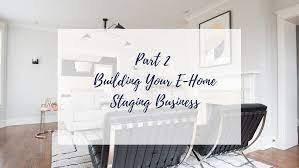Introduction
Starting a staging business allows you to combine your love for design with a profitable venture. Home staging is not just about arranging furniture; it’s about creating a welcoming atmosphere that resonates with potential buyers or renters.
Understanding the Staging Industry
Home staging involves preparing a property for sale or rent by enhancing its visual appeal. It’s not only about making a space look aesthetically pleasing but also about highlighting its unique features and maximizing its potential.
Creating a Business Plan
Crafting a solid business plan is essential for any venture. Outline your business goals, target market, services you’ll offer, and a competitive analysis. A well-thought-out plan will serve as a roadmap for your business’s success.
Legal and Financial Considerations
Register your business and obtain any necessary licenses or permits. Set up a business bank account and ensure you have a clear record-keeping system. Additionally, consider getting liability insurance to protect yourself from potential claims.
Setting Up Your Workspace
Whether you’re working from home or a dedicated office, create a workspace that reflects your professionalism and creativity. A well-organized and inspiring environment can enhance your productivity.
Building Your Portfolio
In the early stages, offer your staging services to friends and family at a discounted rate to build your portfolio. High-quality before-and-after photos of your projects will be crucial for attracting potential clients.
Effective Marketing Strategies
Utilize online platforms like social media, a professional website, and online listings to showcase your work. Visual content is key, so regularly update your portfolio with stunning images of your staging projects.
Networking and Collaboration
Connect with real estate agents, photographers, and other professionals in the industry. Building relationships can lead to referrals and collaborations that will broaden your business’s reach.
Pricing Your Services
Research the pricing structure in your area and determine your rates based on factors such as the property’s size, location, and the extent of staging required. Be transparent with your clients about your pricing.
Managing Client Relationships
Effective communication is vital. Listen to your clients’ needs and ideas while also offering your expertise. A satisfied client is likely to refer you to others or hire you for future projects.
Sourcing Furniture and Decor
Decide whether you’ll purchase, rent, or lease furniture and decor items. Partner with local furniture stores or rental companies to access a variety of options for your staging projects.
Staying Updated with Trends
Stay current with interior design and real estate trends. Attend workshops, seminars, and trade shows to learn about the latest styles and technologies in the industry.
Balancing Creativity and Client Preferences
While your creativity is your asset, remember that your designs should cater to the preferences of potential buyers or renters. Striking a balance between your creativity and their tastes is essential.
Handling Challenges and Solutions
Every business faces challenges. Whether it’s dealing with difficult clients, budget constraints, or tight deadlines, having problem-solving skills will help you navigate through obstacles.
Conclusion
Starting a staging business is an exciting endeavor that allows you to transform spaces and impact the real estate market positively. With a passion for design and a dedication to providing top-notch services, you can turn your staging business into a flourishing venture.
Access Now: https://bit.ly/J_Umma


